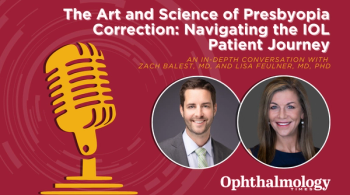
FDA clears dry eye system
The FDA has cleared a proprietary in-office thermal pulsation system (LipiFlow, TearScience) for the treatment of evaporative dry eye caused by meibomian gland dysfunction (MGD).
Morrisville, NC-The FDA has cleared a proprietary in-office thermal pulsation system (LipiFlow, TearScience) for the treatment of evaporative dry eye caused by meibomian gland dysfunction (MGD).
The action enables the company to market and sell the system to eye-care practitioners in the United States. According to TearScience, the system will be available immediately, but on a limited basis in the United States through the end of this year. The company said it will sell the thermal pulsation system and its proprietary ocular surface interferomenter (LipiView) as a system for eye-care practices.
The thermal pulsation system is designed to remove meibomian gland obstructions by applying directed energy to a patient’s eyelid during a 12-minute in-office treatment. TearScience gained FDA clearance after demonstrating the safety and effectiveness of the thermal pulsation system through a U.S.-based, nine-center randomized controlled clinical trial for the treatment of evaporative dry eye.
“With FDA clearance to market the [thermal pulsation system], TearScience provides a new, innovative alternative treatment that delivers effective relief for many patients who desperately need it,” said Alan N. Carlson, MD, a founder of TearScience and chief of the corneal, external disease, and refractive surgery service at the Duke Eye Center in Durham, NC.
TearScience’s integrated, in-office system is designed to address a root cause of evaporative dry eye: the obstructed glands. By assessing the tear film and meibomian gland function, physicians can determine whether MGD is the primary cause of a patient’s evaporative dry eye and whether a patient is a good candidate for the thermal pulsation treatment.
“For the first time, we have a dry eye treatment regimen that patients can undergo in 12 minutes per eye in a physician’s office,” said Stephen S. Lane, MD, of Associated Eye Care, Stillwater, MN.
“When . . . patients [who had undergone the treatment] were seen for follow-up appointments, they were very excited about the significant decrease in symptoms, with many noting a significant improvement in the comfort level they were having-even from the first day of the procedure,” Dr. Lane added.
Newsletter
Don’t miss out—get Ophthalmology Times updates on the latest clinical advancements and expert interviews, straight to your inbox.


















































.png)


